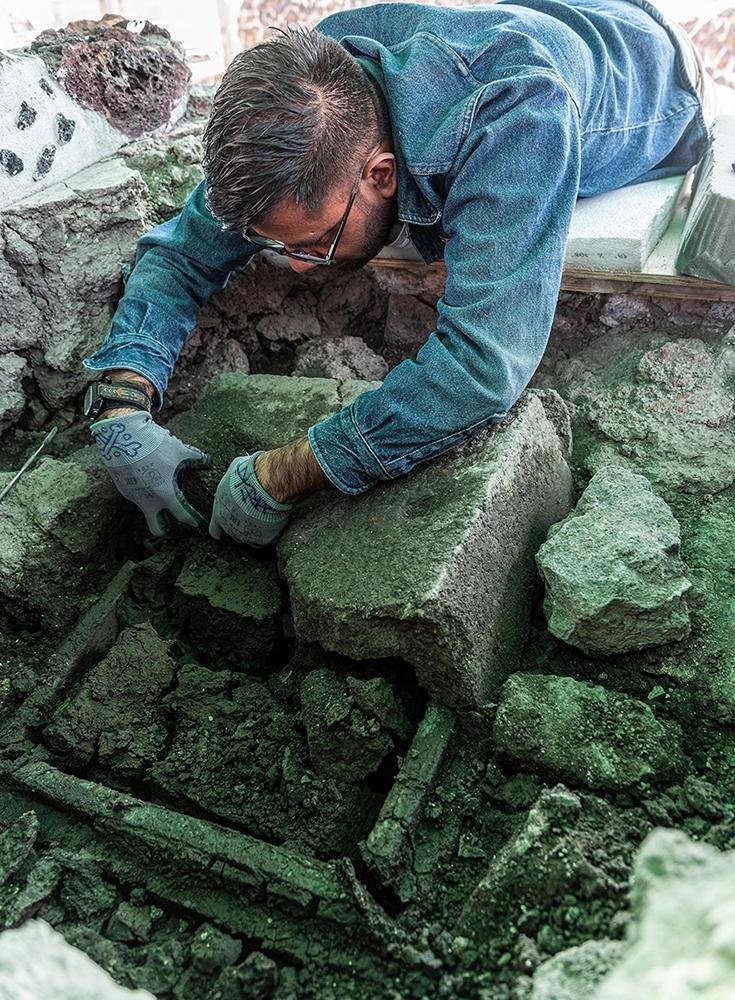In a groundbreaking discovery made in August 2023, archaeologists unearthed an Aztec stone chest at the Templo Mayor in Mexico City, revealing 15 anthropomorphic figurines. This extraordinary find not only captivated researchers but also offered valuable insights into the relationship between the Aztecs and ancient civilizations that predated them. Through this discovery, we gain a deeper understanding of how the Aztecs engaged with their past and how artifacts from earlier cultures were integrated into their own society.
The Mezcala Figurines: A Glimpse Into the Past
The figurines found in the chest are attributed to the Mezcala civilization, which flourished between 700 and 200 BC in what is now Guerrero, Mexico. Known for their intricate stone carvings, the Mezcala people were skilled artisans who produced highly stylized, abstract human forms. These figurines are not only remarkable for their craftsmanship but also serve as a testament to the cultural richness of the Mezcala civilization.

What makes this discovery particularly significant is that the Aztecs, who thrived centuries after the Mezcala civilization, actively collected and repurposed artifacts from earlier cultures. The fact that these figurines were found at the Templo Mayor, the heart of the Aztec capital, suggests a deeper connection between the two civilizations. It is clear that the Aztecs were not only aware of the Mezcala people but may have actively sought out their artifacts, possibly as a way to honor or maintain a link with their predecessors.
The Aztec Approach to Cultural Legacy
The Aztecs’ practice of collecting and repurposing artifacts from older cultures offers valuable insights into their worldview. By incorporating these figurines into their society, the Aztecs may have been seeking to preserve the memory of ancient civilizations, allowing them to maintain a connection to the past. This act of preservation could have had symbolic or ritualistic significance, reinforcing the importance of ancestral traditions in Aztec culture.

The figurines’ presence in the stone chest also suggests that the Aztecs did not view the past as something separate from the present but rather as a continuous thread that shaped their identity. The Aztec approach to cultural legacy was deeply interconnected with their religious and social practices. By integrating older artifacts into their rituals, the Aztecs reinforced the idea of cultural continuity, a key aspect of their broader worldview.
Cultural Continuity and Exchange in Mesoamerica
The discovery of the Mezcala figurines at Templo Mayor also speaks to the broader tradition of cultural continuity and exchange in pre-Columbian Mesoamerica. The Aztecs were known for their ability to absorb elements from various cultures, incorporating them into their own social and religious structures. This ability to adapt and recontextualize cultural elements from different time periods and regions was central to the Aztec’s success as one of the most powerful empires in Mesoamerica.

The figurines’ presence within the Aztec capital suggests that the Aztecs did not simply conquer and destroy previous cultures; instead, they revered and preserved elements of those cultures, integrating them into their own worldview. This process of cultural synthesis not only allowed the Aztecs to honor the achievements of their predecessors but also helped to forge a unified identity that drew on the rich diversity of Mesoamerican history.
Conclusion: A Connection Across Time
The discovery of the Aztec stone chest and the Mezcala figurines offers a rare and invaluable glimpse into the relationships between the Aztecs and the civilizations that preceded them. The figurines, carefully placed in the chest, serve as a powerful reminder of the importance the Aztecs placed on cultural continuity. The find not only illuminates the ways in which the Aztecs honored their ancestors but also highlights the broader cultural exchanges that defined pre-Columbian Mesoamerica.

As research on the figurines continues, archaeologists are likely to uncover more details about the complex network of connections that linked ancient Mesoamerican civilizations. This discovery underscores the ongoing relevance of the past and the profound impact it has on shaping contemporary identities and cultural practices. By uncovering these ancient treasures, we are reminded of how the stories of the past continue to resonate and influence our understanding of the present.

